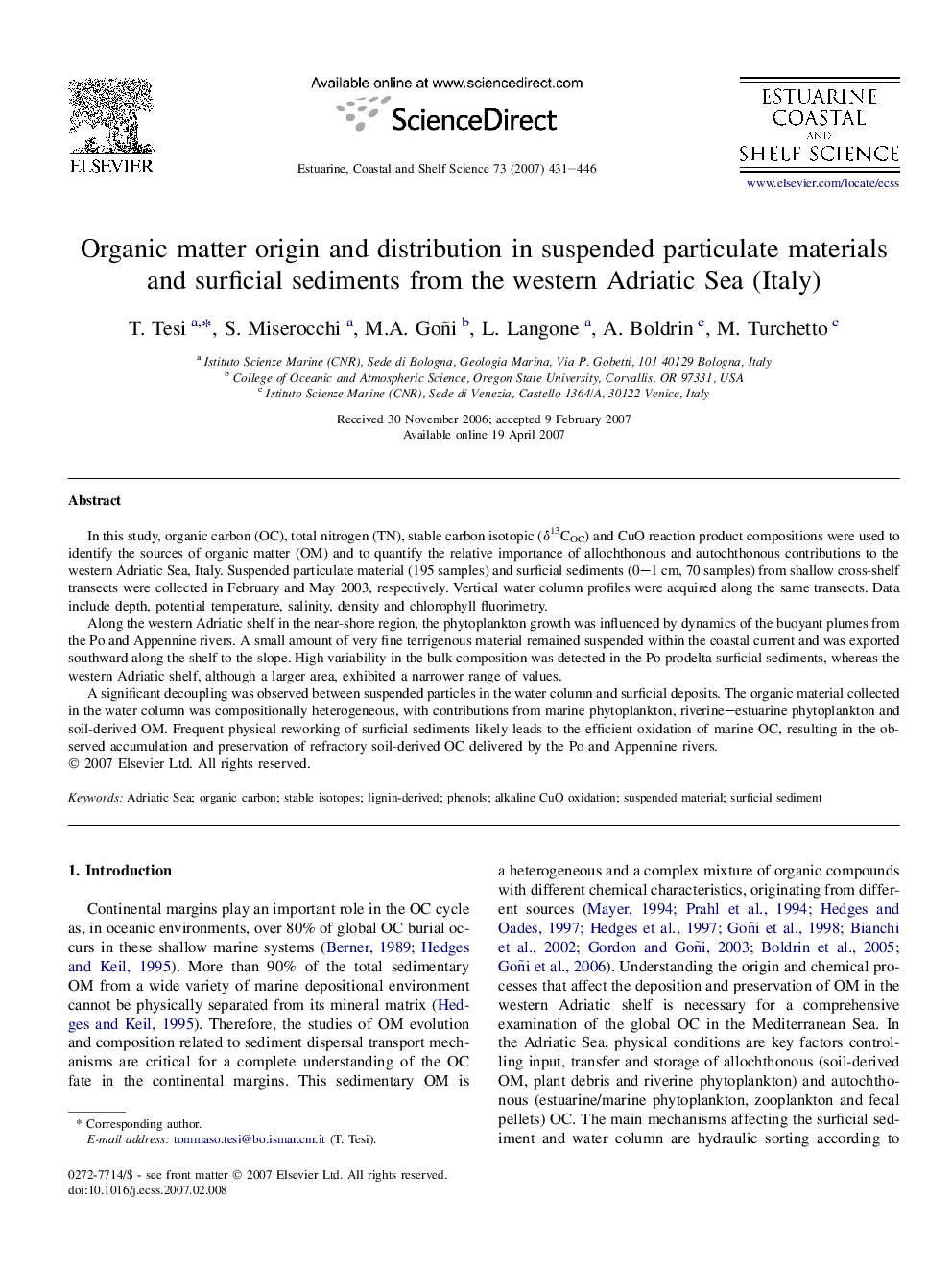| Article ID | Journal | Published Year | Pages | File Type |
|---|---|---|---|---|
| 4541781 | Estuarine, Coastal and Shelf Science | 2007 | 16 Pages |
In this study, organic carbon (OC), total nitrogen (TN), stable carbon isotopic (δ13COC) and CuO reaction product compositions were used to identify the sources of organic matter (OM) and to quantify the relative importance of allochthonous and autochthonous contributions to the western Adriatic Sea, Italy. Suspended particulate material (195 samples) and surficial sediments (0–1 cm, 70 samples) from shallow cross-shelf transects were collected in February and May 2003, respectively. Vertical water column profiles were acquired along the same transects. Data include depth, potential temperature, salinity, density and chlorophyll fluorimetry.Along the western Adriatic shelf in the near-shore region, the phytoplankton growth was influenced by dynamics of the buoyant plumes from the Po and Appennine rivers. A small amount of very fine terrigenous material remained suspended within the coastal current and was exported southward along the shelf to the slope. High variability in the bulk composition was detected in the Po prodelta surficial sediments, whereas the western Adriatic shelf, although a larger area, exhibited a narrower range of values.A significant decoupling was observed between suspended particles in the water column and surficial deposits. The organic material collected in the water column was compositionally heterogeneous, with contributions from marine phytoplankton, riverine–estuarine phytoplankton and soil-derived OM. Frequent physical reworking of surficial sediments likely leads to the efficient oxidation of marine OC, resulting in the observed accumulation and preservation of refractory soil-derived OC delivered by the Po and Appennine rivers.
